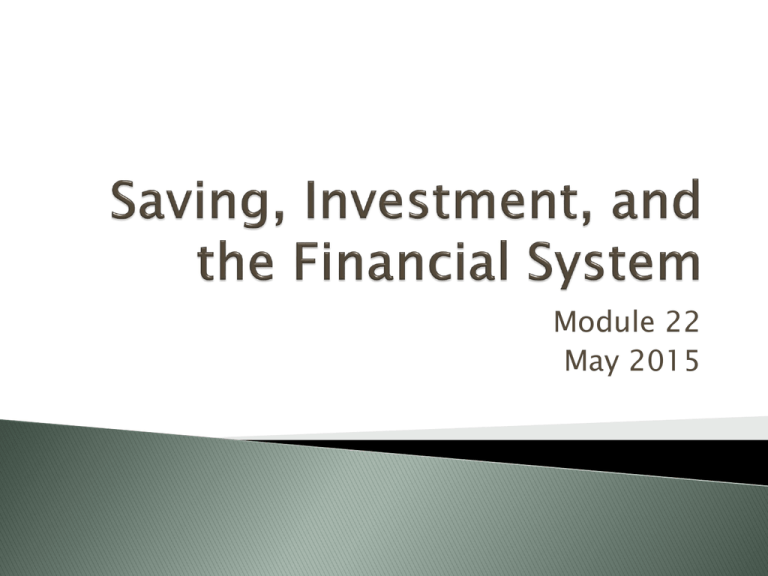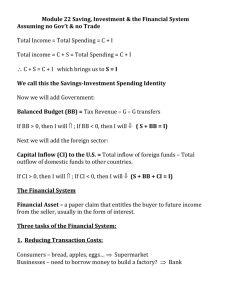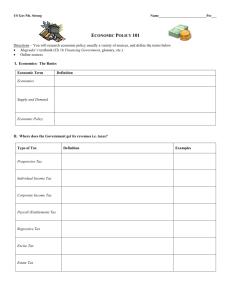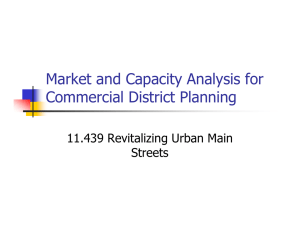Saving, Investment, and the Financial System
advertisement

Module 22 May 2015 Interest rate – the price, calculated as a % of the amount borrowed, charged by lenders to borrowers for the use of their savings for one year Savings-investment spending identity – savings and investment spending are always equal for the economy as a whole Budget surplus – the difference between tax revenue and government spending when tax revenue exceeds government spending Budget deficit – the difference between tax revenue and government spending when government spending exceeds tax revenue Budget balance – the difference between tax revenue and government spending National savings – the sum of private savings and the budget balance, is the total amount of savings generated within the economy Capital inflow-is the net inflow of funds into a country Wealth – the value of a household’s accumulated savings Financial asset – a paper claim that entitles the buyer to future income from the seller. Physical asset – a claim on a tangible object that gives the owner the right to dispose of the object as he or she wishes Liability – a requirement to pay money in the future Transaction costs – the expenses of negotiating and executing a deal Financial Risk – uncertainty about future outcomes that involve financial losses Diversification – investing in several different assets so that the possible losses are independent events Liquid – can be quickly converted into cash without much loss of value Illiquid – cannot be without much loss of value Loan – a lending agreement between an individual lender and an individual borrower Default – when a borrower fails to make payments as specified by the loan or bond contract Bond – an IOU issued by the borrower, usually the seller agrees to a fixed amt of interest each year and agrees to settle the IOU on a specific date. Loan-backed Securities – an asset created by pooling individual loans and selling shares in that pool. Stock – a share in the ownership of a company. A share of stock is an asset for the buyer and a liability for the company – risk tolerance Financial intermediary is an institution that transforms the funds it gathers from many individuals into financial assets Mutual funds – a financial intermediary that creates a stock portfolio and then resells shares of this portfolio to individual investors Pension fund – a type of mutual fund that holds assets in order to provide retirement income to its members Life insurance company – sells policies that guarantee a payment to a policyholder’s beneficiaries when the policyholder dies Bank deposit – a claim on a bank that obliges the bank to give the depositor his or her cash when demanded Bank – is a financial intermediary that provides liquid assets in the form of bank deposits to lenders and uses those funds to finance the illiquid investment spending needs of borrowers.







